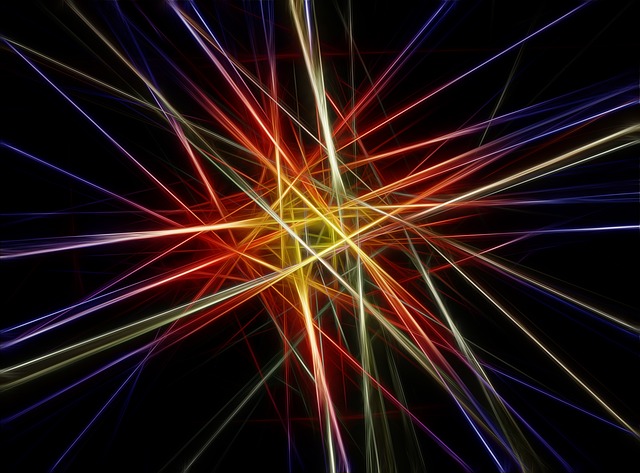Dye laser and its construction
Dye lasers use liquid organic dyes. These organic dyes are dissolved in solvents like water, ethyl alcohol, methanol. The most widely used dye is rhodamine-6G, also known as Xanthene dye. These lasers are discovered by Sorokin and his colleagues. Dye lasers operate without the intervening metastable state.
CONSTRUCTION
The dye laser consisted of a 1cm long quartz glass tube filled with solutions of organic dyes such as rhodamine- 6G.
Active Medium. Rhodamine-6G dissolved in a suitable liquid like water, ethyl alcohol or methanol is used as the active medium. The dye solution used in the dye lasers typically has a concentration in the range of 10-2 to 10-4 M. Rhodamine-6G emits in yellow-red region.

Pumping source: Energy to excite the dye is supplied by a strong light source that may be a flash lamp or another laser like N2 laser or argon-ion laser. Thus, optical pumping is used to excite the dye and to achieve population inversion.
Optical resonator System. The most useful feature of dye lasers is their tunability. The tunability means that the lasing wavelength for a dye may be varied over a wide range. Due to this reason, dye lasers are also called tunable lasers. Tuning over 500 angstrom has been obtained.
One of the techniques to obtain tuning is to replace one of the mirrors of the resonant cavity with a diffraction grating. Thus a dye cell is usually placed inside a cavity consisting of a partially reflective mirror on the front and a diffraction grating on the rear. A source light is focused onto the dye to excite it and stimulate laser action.
By rotating the diffraction grating , wavelength of laser output can be altered. Thus tuning is obtained. Therefore, this combination of partially reflective mirror and diffraction grating will act as optical resonator system. For radiation to be reflected back along the laser cavity axis, the angle θ that the normal to the diffraction grating makes with the cavity must satisfy the condition.
2dsinθ =nλ (n = 1, 2, 3, …)
Where d is grating spacing
Λ is wavelength of radiation.
By rotating the grating, angle θ will be changed and thus the output wavelength will be changed that is tuning of output wavelength will be achieved.

Kindly Read This Also :
Note from winnerscience: If you want the e-notes of all the laser documents that will include the basics of lasers like stimulated absorption, difference between spontaneous and stimulated emission, Einstein Coefficients, properties and applications of lasers, complete construction and working of lasers like Ruby laser, He-Ne laser, Carbon dioxide laser, Nd:YAG laser, dye laser, semiconductor laser, holography and additional articles of Q-switching and mode locking, then please contact winnerscience@gmail.com. You can post your queries also there.